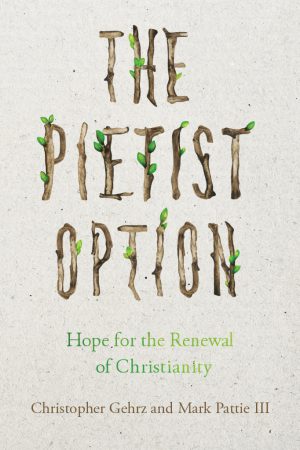American Christianity is in a parlous state. It constitutes a shrinking share of the population. And in terms of worship service attendance, most of its churches are shrinking too.
Regarding share of the population, most Americans continue to identify as Christians, but that number is declining. According to America’s Changing Religious Landscape, a 2015 report from Pew Research Center, 70.6 percent of Americans identify as Christians, down from 78.4 percent only seven years earlier. Over the same period, so-called “nones” — that is, Americans with no religious affiliation — increased their share of the population from 16.1 to 22.8 percent.
Regarding worship service attendance, Thom Rainer argues that 65 percent of churches are plateaued (9 percent) or declining (56 percent) in worship service attendance. That’s better than the 80 percent figure often bandied about, but it’s still not good. Just a little over 1 in 3 churches (35 percent) are growing.
These data are rough metrics of church health, of course, but it’s difficult to believe the American church is doing well when its numbers head south over such a short period of time. What is to be done? How should American Christianity be renewed?
That is the question Christopher Gehrz and Mark Pattie III take up in their new book, The Pietist Option. Gehrz is a professor of history at Bethel University in St. Paul, Minnesota, and Pattie is senior pastor of Salem Covenant Church in nearby New Brighton. Both are members of the Evangelical Covenant Church, a denomination with Swedish Pietist roots.
Pietism arose in late-17th-century Germany as a response to the perceived spiritual coldness of orthodox Lutheranism. Its first advocate was Philip Jacob Spener (1635–1705), whose 1675 book Pia Desideria outlined a Pietist plan of renewal. (The book’s full title is Heartfelt Desire for a God-pleasing Reform of the True Evangelical Church, Together with Several Simple Christian Proposals Looking Toward This End.)
Gehrz and Pattie self-consciously utilize the outline of Pia Desideria in their book. Noting differences between the circumstances of German Lutheranism in 1675 compared to American Christianity today, they nonetheless think Spener’s basic themes were on target. Thus, their proposals for renewal include:
- A more extensive listening to the Word of God
- The common priesthood for the common good
- Christianity as life
- The irenic spirit
- Whole-person, whole-life formation
- Proclaiming the good news
The authors illustrate these themes from Scripture and Pietist history, but they also show how each theme is desperately needed in today’s churches.
Although I am a Pentecostal, not a Pietist, these themes deeply resonated with my heart. The primary reason for this is that they have deep biblical roots. But a secondary reason is that Pietist instincts long ago slipped the boundaries of Pietist institutions and affected the broader Christian world. Moravian Pietists, for example, deeply influenced the spirituality of John Wesley, who in turn formed the spirituality of Methodism and evangelicalism, which in turn shaped my own tribe’s spiritual sensibilities.
A final reason why The Pietist Option so deeply resonated with me is its Jesus-centeredness. The entire program of Pietism, if program is the right term, can be summarized in four words: Come back to Jesus. Gehrz and Pattie write:
… Pietists who live in, with, and for the person of Jesus probably feel his presence more than they think about the idea of Christ. But they also tend to suspect that if we answer the call to “Come back to Jesus,” we’ll soon find that being a Christ-follower is both less and more than we’ve assumed.
Less because if those four words are the call, then there’s a good chance that we’ve made Christianity too complicated. So Pietists simplify. For example, their lists of essential doctrines tend to be short…
More in that answering that call leads to growth, to change so radical that we can only start to describe it with two of the New Testament’s most audacious metaphors: new birth (Jn 3:7) and new life (e.g., Rom 6:4). Pietists fully expect the encounter with Jesus to be transformative …
The Pietist Option is not a full-orbed battle plan for the Christianization of American society. It doesn’t outline a rigorous intellectual apologetic, for example, nor does it detail the shape of the reform of church and culture. It doesn’t necessarily oppose those things, I should add — although “irenic spirit” and “culture war” don’t jibe. But my guess is that Pietism doubts Christian ideas and reforms will work if Christians themselves don’t first and foremost have a living trust in Jesus.
So, come back to Jesus! It’s not the only thing to say about the renewal of Christianity, but it’s certainly fundamental.
Book Reviewed
Christopher Gehrz and Mark Pattie III, The Pietist Option: Hope for the Renewal of Christianity (Downers Grove, IL: IVP Academic, 2017).
P.S. This review was written for InfluenceMagazine.com and appears here by permission.
P.P.S. If you found my review helpful, please vote “Yes” on my Amazon.com review page.

